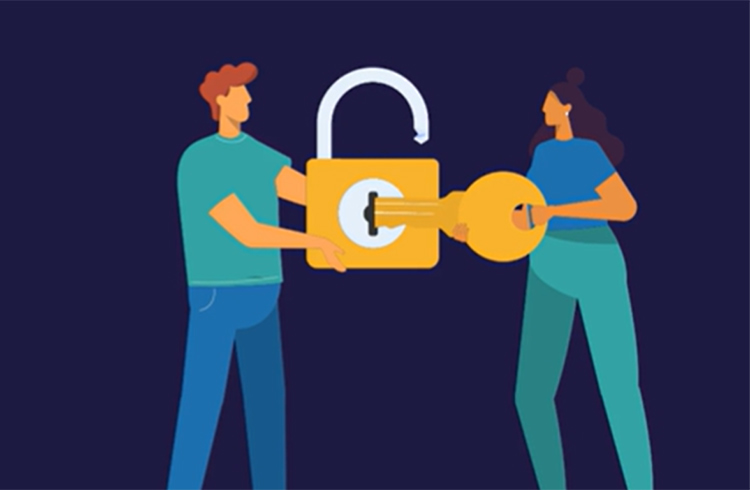

A Guide on How to Lease an Office Space
FIND A BROKER
01 // Find the Right Commercial Real Estate Broker for You
Looking for your ideal office space is complicated and can get expensive—quick. The key to securing funding, finding the right location, and evaluating commercial property accurately is working with a broker. Find a Cushman & Wakefield broker
Hiring a commercial real estate broker is a crucial step in ensuring successful property transactions, whether you’re buying, selling, or leasing. Here's a straightforward guide to help you make an informed decision:
Define Your Objectives
Clarify your goals and requirements before starting your search. Determine the type of property you need (office, retail, industrial, etc.), your budget, and any specific criteria that are important to your business. Keep in mind that a broker can help you evaluate and define these objectives, but it can be useful to have a starting place or some criteria in mind to make sure you select the right broker for your needs.
Look for Specialized Experience
Seek out brokers who specialize in the type of property you’re interested in and have extensive experience in the local market. A broker with a deep understanding of the area’s real estate landscape will provide valuable insights and opportunities.
Conduct Thorough Interviews
Interview multiple brokers to assess their knowledge, strategies, and compatibility with your needs. Ask about their recent transactions, client experiences, and how they plan to meet your specific requirements.
Check Credentials and References
Verify the broker's credentials, including licenses and professional affiliations. Additionally, request references from previous clients to get an idea of their track record and reliability.
Evaluate Communication and Professionalism
Choose a broker who communicates effectively and demonstrates professionalism. They should be responsive, transparent, and proactive in addressing your concerns and keeping you informed throughout the process. Ultimately you want to work with someone you trust and whose communication and decision-making style compliments your own. Navigating the real estate process can be time consuming and involves large decisions with a lot of nuances. Working with someone who you trust to advocate for your interests, and who will keep your goals in mind, is key.
By taking these steps, you can find a commercial real estate broker who is well-suited to your needs and capable of guiding you through the complexities of the market. This careful selection process will help ensure a successful and smooth property transaction. Remember to also review the terms and conditions of any agreements carefully before signing, to protect your interests.
Interested in starting your leasing journey?
OFFICE SPACE SIZE
02 // Determine How Much Office Space You Need
Careful planning is essential when determining your office space needs. Both excess and insufficient space can strain your budget and disrupt business operations. A poorly sized office can lead to a fragmented environment, negatively affecting productivity and communication. Your broker will also help you plan for the future and will be able to guide you on how much space is right for your team and goals.
Accurately determining your office space needs is essential for maintaining a comfortable and productive work environment. Here’s a four-step guide to help you assess your office space requirements:
Assess Your Current Employee Situation:
- Employee Count: Determine how many employees you currently have.
- Work Arrangements: Identify how many employees work full-time, part-time, remotely, or follow a hybrid schedule.
Look at Your Growth Plans
- Staff Additions: Consider whether you will add new staff during the current lease term.
- Growth Timeline: Define the timeline over which new staff will be added.
- Employee Types: Determine the types of staff (executive, administrative, sales) you plan to hire.
Determine an Ideal Layout for Your Office Space:
- Open Office Floor Plan: This layout typically requires less space per employee and is suitable for call centers and sales offices with grouped desks or workstations.
- Traditional Office Layout: Includes private offices, large conference rooms, and support rooms like kitchens and libraries, requiring more square footage.
- Keep in mind, different layouts can also help establish distinct types of company cultures and attract and retain the right talent. Your broker can help you establish what sort of layout would work and what sorts of buildings or leases would work with those goals.
Factor in Other Variables:
- Assess various factors like natural lighting, ergonomic office furniture, adequate ventilation, proximity to transportation options, and accessibility for employees with mobility aids.
The amount of square feet per employee varies dramatically in certain parts of the country, between various industries, and depending on what type of talent you have or are looking to attract. Your broker will help you navigate the right space range for your goals and needs, but here are some rough guidelines to help get you started.
CREATE A BUDGET
03 // Create a Budget
Creating a budget for your commercial real estate space involves identifying all potential expenses, such as rent, utilities, maintenance, and property taxes, to ensure comprehensive financial planning. Be sure to also account for potential tenant improvement allowances (TIAs), which are often provided by landlords to help customize or renovate a space to fit your needs. Allocating funds for unexpected costs and future improvements is equally crucial to maintain flexibility and sustainability in your budget. Your broker can advise you on typical costs in your desired location or area and guide you through various options. For example, you could lease more space of lesser quality or, for the same total cost, lease a smaller space but in a more expensive building with more amenities. Your broker can help you navigate what would work best for your company and the goals you’ve established for your real estate.
Looking for a broker?
FIND A LOCATION
04 // Find a Location
NEGOTIATE CONTRACT
05 // Negotiate and Sign Contract
When negotiating a contract for commercial real estate, it's crucial to clearly outline your terms and expectations, including lease duration, rent, and responsibilities, while being prepared to make concessions in areas less critical to your business. Once both parties reach an agreement, ensure all details are meticulously documented and reviewed by legal counsel before signing to safeguard your interests.
OFFICE FIT OUT
06 // Fit Out the Space
Who Carries Out an Office Fit-Out?
Types of Office Fit-Outs:
Shell and Core
- Screeding floors
- Plastering walls
- Electrical rewiring
- Installing new heating or air-conditioning systems
- Extensive rebuilding works
Category A
This type of fit-out generally includes:
- Raised floors
- Suspended ceilings
- Blinds
- Internal surface finishes (e.g., flooring, wall painting)
While the building's owner typically covers these costs, tenants may need to pay for additional specific alterations.
Category B
A category B fit-out completes the office space, including:
- Break out spaces and meeting rooms
- Desks and general furniture
- IT and audio-visual equipment
- Specialist lighting
- Branding and decorative touches
This comprehensive fit-out often requires collaboration between the tenant and the building's owner.
Turnkey
Fit-Out Agreements
- Estimated timescale and costs
- Specific quantities of furniture and equipment
Transforming an office space into a functional workplace involves understanding the different types of fit-outs and their respective requirements. Whether you need a basic category A fit-out or a comprehensive turnkey solution, knowing the process and potential costs will help you create an effective and welcoming office environment.
More Insights

MarketBeat
Research • Workplace

Article
Why Tenants Need Representation



